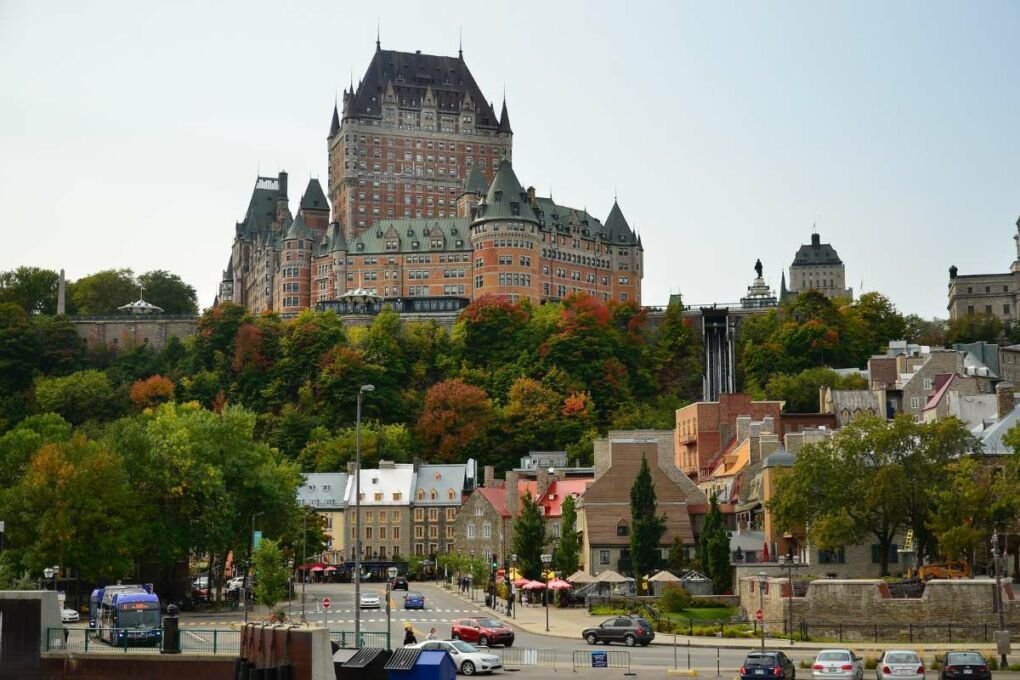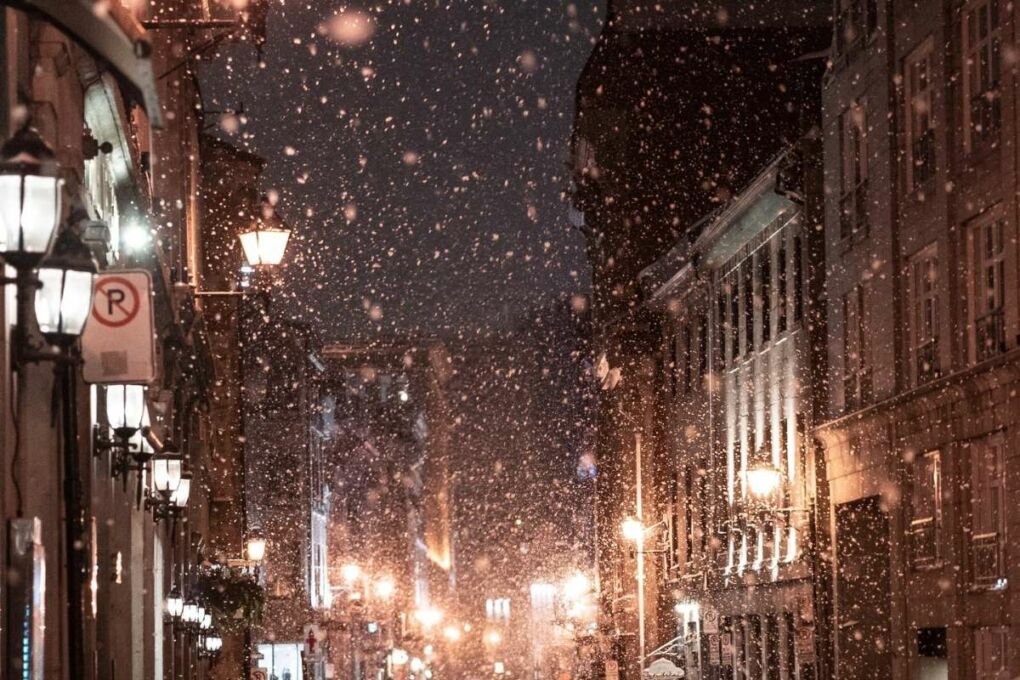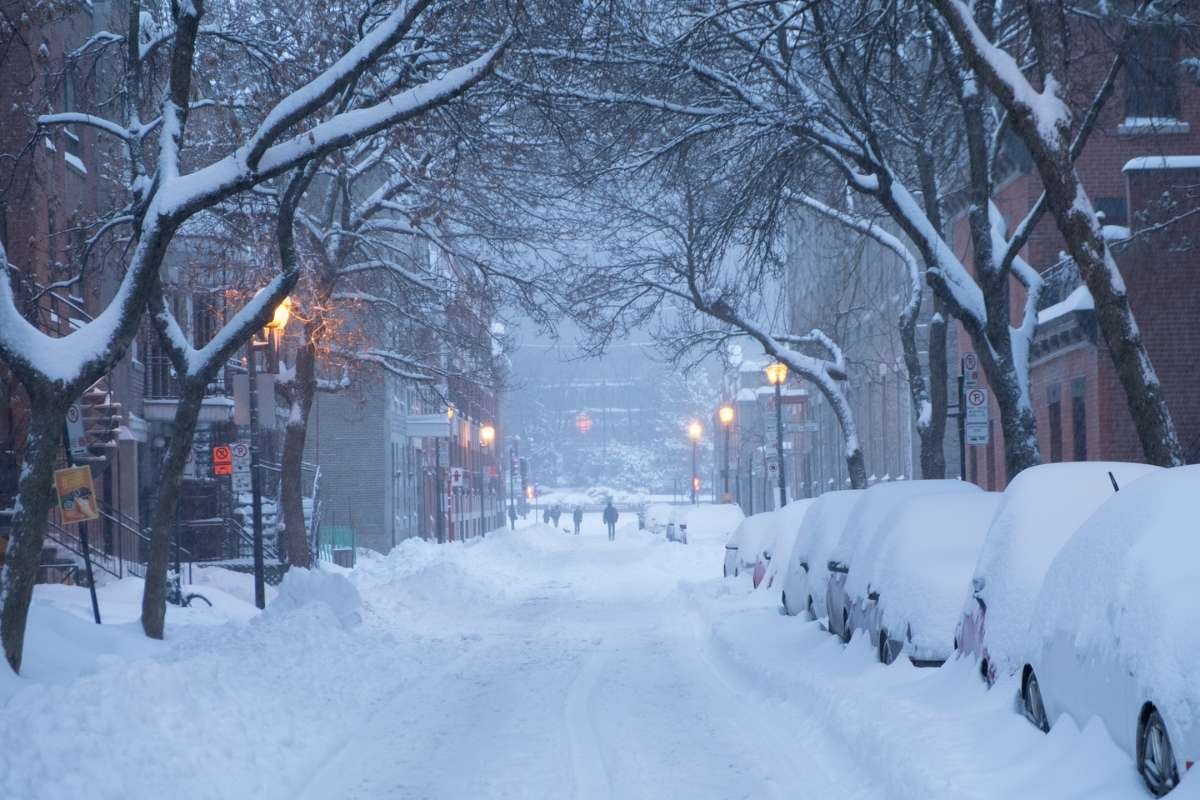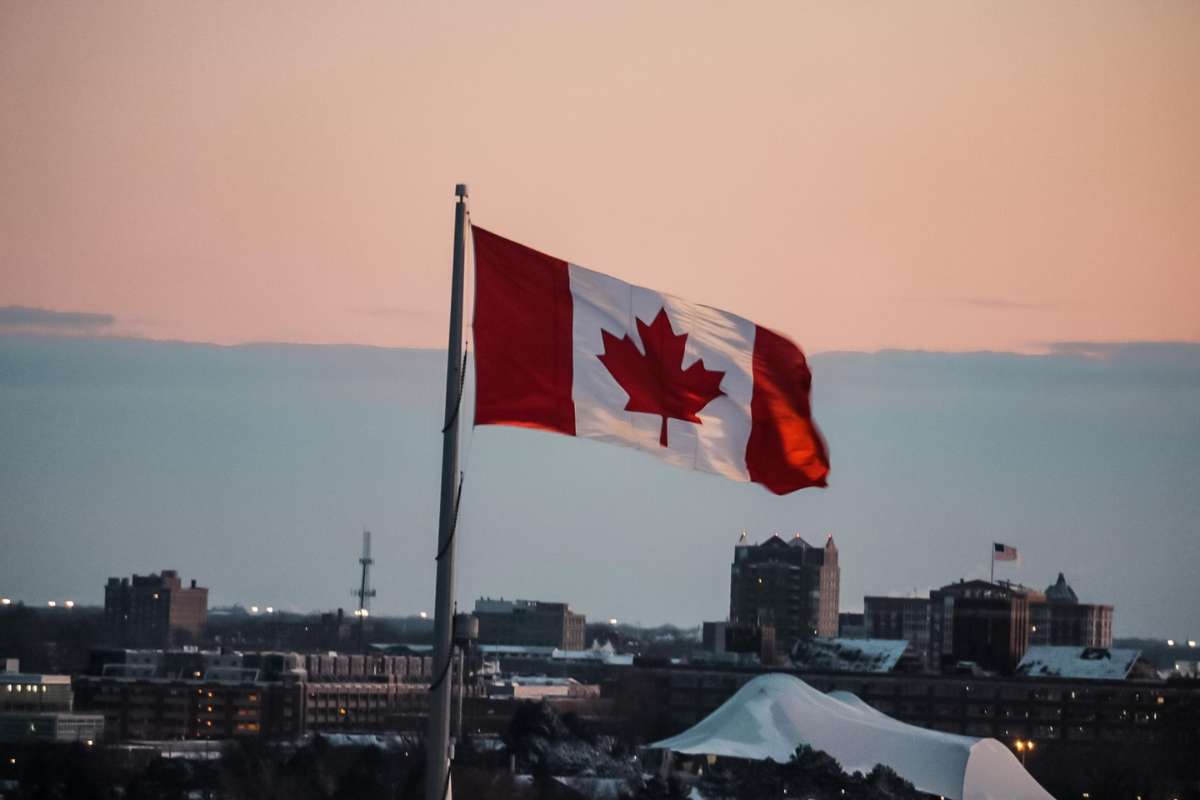Canada is a country filled with awe-inspiring landscapes, bustling metropolitan cities, and a rich mix of cultures, each more welcoming and fascinating than the last. Such a large country with densely populated cities, each containing a strong mixture of cultures, can be tumultuous. So, it is only natural to ask, is Canada Safe for tourists?
The truth is every country has its issues, some more than others. Canada has a sterling reputation for being a fairly safe country. Its reputation has gotten to the point where there are running jokes all over the internet about how nice Canadians are. But are there any catches, and if there are, what are they?
You are about to uncover all of Canada’s secrets. The dangers you can expect while visiting the country, spoiler alert – it’s mostly weather-related, to where the best places to live in Canada are to keep you as safe as possible.

Why Visit Canada?
Canada’s relative safety is a massive draw for many travelers and expats. Especially when compared to other popular places for expats to live in America. Safety aside, Canada is home to some of the world’s most beautiful cities, such as Toronto and Montreal.
Each brings a very different vibe and culture, as well as stunning architecture, such as the CN Tower and the unforgettable Notre Dame Basilica. Canada also offers magical attractions for those who aren’t drawn to cities and pretty buildings.
Instead, it boasts alluring natural landscapes, vistas, and landmarks. The best evidence of this is the astonishing Niagara Falls and the beautiful views it delivers. Honestly, Canada’s natural beauty is so irresistible that you will seek out guides on remote work programs for digital nomads to stay as long as possible.

Is Canada Dangerous?
Canada as a whole is one of the safest countries in the world, whether you are an intrepid explorer or a born and bred local. That being said, it does not mean that caution can be thrown to the wind while visiting this beautiful country.
According to Statista, Canada’s homicide rate per 100,000 people is 2.06. In comparison, the USA has a murder rate of 5 in 100,000, which is almost three times higher than Canada’s rate. The other major danger is Canada’s extreme weather. Some parts of the country are so cold that they are inhospitable for both humans and wildlife.
It is worth noting that all statistics, good or bad, should be taken with a heavy helping of salt. It is very easy, even for experts, to have the wrong impression from solely relying on statistics.
For example, during the summer, ice cream sales and petty theft crimes tend to increase in most countries. Now, does this mean that eating more ice cream will make you more likely to be a victim of theft? Probably not.

Dangerous Areas in Canada
Winnipeg
Winnipeg is a city of rich history and diverse culture. It was the birthplace of a few pop culture icons. Anna Paquin, who played Rogue in the X-men movie franchise, and the 90s rock sensation Crash Test Dummies are just a few examples of this.
Sadly, it is not without its struggles, though, being rated one of the most dangerous cities in Canada. The most often occurring crimes in Winnipeg are the dealing of drugs, vandalism, and theft. The good news is that the crimes in the city mostly do not affect out-of-towners.
Lethbridge
Lethbridge is home to some truly stunning natural landmarks, such as the Oldman River that runs through the rolling green hills of the Coulees. Yet, it shares many of the same issues as Winnipeg, including its most often committed crimes.
Despite Lethbridge being rated the most dangerous city in Canada by Statista, it still stands as a testament to how safe Canada is as a country. When compared to how safe New Orleans is for tourists, Lethbridge is still rated safer on Numbreo by about six index points.

Is it Safe to Live in Canada?
Canada is one of the most safest countries to live in, especially when compared to the safety of South Africa or other developing countries such as Haiti. Sure, it has its problem cities, but which country doesn’t?
Currently, Canada has a much larger issue with its dangerous weather patterns and wildfires in its forests than it does with crime. While staying in Canada, you will often hear about the wind chill index.
Despite its relatively relaxed name, it is actually an indicator that is used to let you know whether or not frostbite and hyperthermia are likely to occur while outside. With this in mind, as long as you take the extra precautions of checking weather forecasts before exploring, Canada can be one of the safest places for any tourist or expat.

Safe Cities in Canada
Québec City
The first thing you will notice as you explore Québec City’s remarkable landmarks is the visible public services. All of its emergency stations are well-marked and supported by frequent police patrols.
No one wants to visit a city purely for its safety, and even though Québec City is the safest city in Canada, according to Statista. It also has an abundance of history, culture, and delicious food. While staying in the capital of the Québec province, be sure to grab a plate of poutine and check out the La Citadelle de Québec fortress.
Toronto
Toronto is absolutely packed with astonishing things to do. You can explore the CN Tower, peruse around the St. Lawrence Market, or go check out the Gothic Revival castle-style mansion known as Casa Loma.
The best part is you can do all of this while feeling safe, sound, and relaxed. Toronto has a history of implementing effective policing strategies that are at the heart of the city’s incredibly low crime rates. These strategies range from the police force’s impeccable training regimens to working hand in hand with the community to keep Toronto safe for tourists and locals alike.

Montreal
Montreal offers a surprisingly wide variety of attractions for tourists. Most come to visit this city’s exquisite buildings, such as the Notre Dame Basilica of Montreal. On the grittier side of things, Montreal hosts one of the best Formula 1 races of the year on its semi-permanent race track.
Now, you may get the impression that one of the most popular tourist spots in Canada may come with a higher risk than other cities. Numbeo has given the city a crime rating score of only 31.83.
Warnings & Dangers in Canada
As with all travel destinations, Canada isn’t free of dangers. What makes Canada unique, though, is that most of its highest danger warnings are nature-related. These warnings come in a wide variety. They can range from the wind chill factor to wildlife crossing your path while exploring hiking trails and even some of the cities.
This is not to say that there is no element of crime at all. As with any country, the usual dangers of pickpockets and petty theft are still a very real possibility. Regardless of how low of a possibility these are, it is always in any explorer’s best interest to stay vigilant and cautious.

Overall Travel Risk (5/10)
Canada is relatively low risk to anyone who comes to explore its historical sites and magical landscapes. The two major risks that any traveler will face are the extreme weather and the current issue the country has with wildfires.
To a lesser extent, the free-roaming wildlife can be a concern for hikers, mountain bikers, and climbers. Due to the unforgiving weather, driving conditions can also be trickier than expected. So, when compared to other popular tourist vacation spots, such as St Lucia, Canada is extremely safe.
Wildfires
There may be nothing that demonstrates the beauty and destruction of Mother Nature better than a rampaging wildfire. Thankfully, they only occur sometimes in Canada. However, they find themselves on this list due to them becoming more and more frequent in recent years.
If you find yourself in this situation, the best thing to do is to stay calm and comply with any authority on the scene. To ensure you are covered as well as you possibly can, check with your travel insurer if they cover loss of valuables due to wildfires.

Wild Animals
There are many humorous videos plastered across the interwebs of some random moose or bear just strolling into a small store or gas station in Canada. As funny as these videos can be, the situation can quickly escalate and become very dangerous.
If you do stumble across a wild animal during a hike or a quick refueling stop in between cities, it is highly recommended to not interact with them. Keep your distance and do not make any sudden movements.
Pickpockets
No travel safety guide is complete without addressing the number one threat to all adventurers. The common pickpocket. In the immortal words of Bruce Wayne, yes, that is Batman, criminals are a cowardly and superstitious lot. This means pickpockets are fairly easy to deal with.
Keep your most valuable possessions in a safe at your accommodations. If you do need them on your person for the activities you have planned that day, a good, theft-proof backpack will make all the difference. It is worth noting that pickpockets are fairly rare in Canada but not non-existent, so keep an eye out for any shifty characters as you travel.
Wind Chill Alerts
We have already very briefly touched on what the wind chill factor is in Canada. This may seem like a very terrifying thing to deal with while visiting the country. The truth is that Canada takes many precautions to keep its visitors and inhabitants as unaffected as possible.
Many weather reports in Canada will include the windchill index as a part of the report. Suppose you want to be extra sure. In that case, you can work it out for yourself by following the steps provided by the Canadian Government.

Tips for Staying Safe in Canada
Trying to stay as safe as possible while in an unfamiliar country can be rather tough. So, to help you out, you will find five easy tips to keep you safe down below.
- Research the expected weather for the city and time of year you are planning to visit in Canada.
- While in highly populated areas, walk around with purpose and keep all valuables out of sight. This will deter any long-fingered strangers around you from picking your pockets.
- Avoid walking around at night alone. By keeping your explorations during daylight hours, you will significantly lower the chances of something bad happening.
- Canada is well known for its impeccable health care. As a tourist, however, you will need to make sure your travel insurance covers any medical costs for the region you are visiting.
- The driving conditions on wet, or more specifically icy roads, are not something everyone is used to. You should consider taking a driving course for driving on icy, wet, and snowy roads before getting behind the wheel.

Is Canada Safe | Frequently Asked Questions
Is Canada Safe for Solo Female Travelers?
Yes, Canada is exceptionally safe for all travelers, including solo female travelers. That being said, it is never a bad idea to brush up on some basic self-defense classes. Alternatively, you can establish a buddy system with a friend or relative before you travel and keep them updated on your whereabouts.
How Can I Report Suspicious Activity or Crimes?
As with all countries, Canada has emergency numbers for when something takes an unexpectedly bad turn. Thankfully, Canada shares the most recognized emergency number in the world with its southern neighbor, 911.
What Is the Safest Province in Canada?
According to the ever-reliable Statista, Québec is the province with the lowest amount of reported crimes, with Ontario hot on its heels. So, if you are looking to plan the safest Canadian getaway possible, it is highly recommended to keep your stay within those provinces.
Is Canada Safer Than The US?
On Numbeo’s crime and safety directory ratings, Canada is ranked a whopping 22 spots higher than the USA. Canada’s crime score (Lower is better) is 44.8 vs. America’s 49.2. In the safety ratings, Canada’s safety score (higher is better) is a respectable 55.2 compared to the US’ 50.8.
